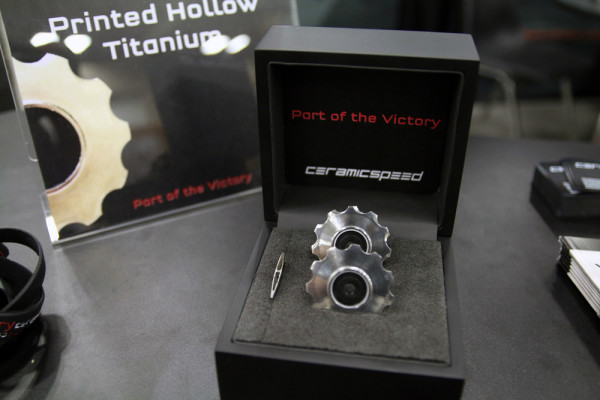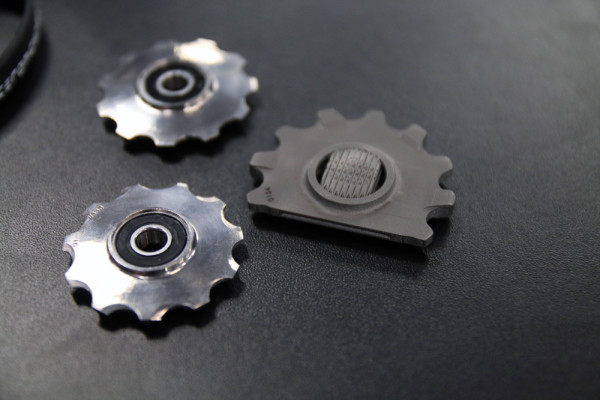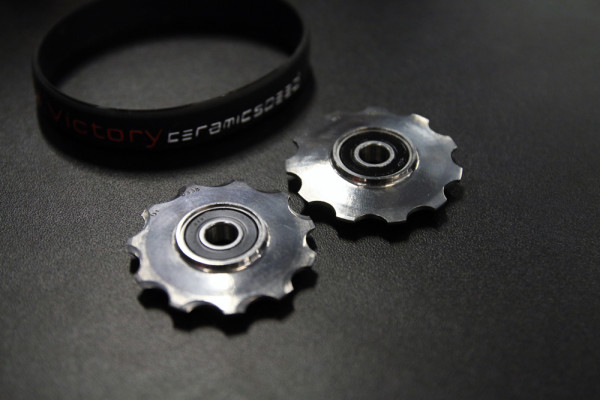To be honest, derailleur pulleys probably won’t be the first place you turn to remove some weight from your bike. In the case of Ceramicspeed, their bearings will probably make more of a difference than lightening the pulley itself, but fortunately, their latest project isn’t just about weight. Often in order to make derailleur pulleys lighter manufacturers look towards lighter material which typically has a shorter life. The pulleys also usually incorporate holes into the design to remove as much weight as possible. As anyone who has ever ridden a bike in muddy conditions can tell you though, getting your pulleys packed up with mud does your drivetrain zero favors.
What if there was a way to make a lighter pulley, but one that was also more durable? A pulley with a solid exterior that prevented mud build up, and allowed the chain to ride more smoothly over the teeth? That was what Ceramic speed hoped to accomplish and like many manufacturers currently, they decided to look into 3D printing to make it happen…
The key to the use of additive manufacturing for the pulleys is that it allows a hollow internal structure, but maintains a solid face externally. The result is the lightest pulley they could make out of solid metal. Even without cutouts and the heavier titanium when compared to their aluminum pulleys, the 3D printed titanium pulleys come in about 10% lighter. Creating the design wasn’t as simple as just printing them out however, as Ceramicspeed worked with the Danish Technological Institute for almost 4 years perfecting the concept.
Shown above, top right, Ceramic Speed is also working on an XX1 version of the 3D Printed pulley wheels which will certainly benefit from a lack of holes for mud to accumulate.
Outfitted with Ceramicspeed’s best ceramic bearings, the 3D printed pulleys will initially be offered in an extremely limited run of just 10 sets that are compatible with Shimano, SRAM, and Campagnolo in both 10 and 11 speeds. Delivered in an exclusive case and individually numbered, if you want the best you also have to pay for it with retail estimated at $1000 per set. That chunk of change will net you 3 times the life span of a traditional pulley and about 1g less than aluminum per pulley. The “world’s most innovative pulley wheels” are also almost certainly the most expensive.



